There are about 60,000 unpaid carers in our city. I call them Manchester’s Silent Army. They have a job to do and just get on with it. But, for one week a year, they get together and have a bit of fun. Here are some of the events that I joined in during Carers Week…
First off, a trip to the Bridgewater Hall for the Halle Orchestra performing The Lark Rising, including a mini tour and buffet. What a treat. What a spectacular building and how lucky are we to have such talented musicians in our city. The ice-cream tubs (I mean it would be rude not to) were divine. Next up, Walking Football at Manchester City Training Stadium. Walking Football, if you didn’t know, is an actual thing that people do. The game has its own set of rules, even its own league and the Man City trainers run these sessions twice a week. It was a brilliant afternoon, the training facility was awesome and the buffet… delicious.
Next up, Walking Football at Manchester City Training Stadium. Walking Football, if you didn’t know, is an actual thing that people do. The game has its own set of rules, even its own league and the Man City trainers run these sessions twice a week. It was a brilliant afternoon, the training facility was awesome and the buffet… delicious.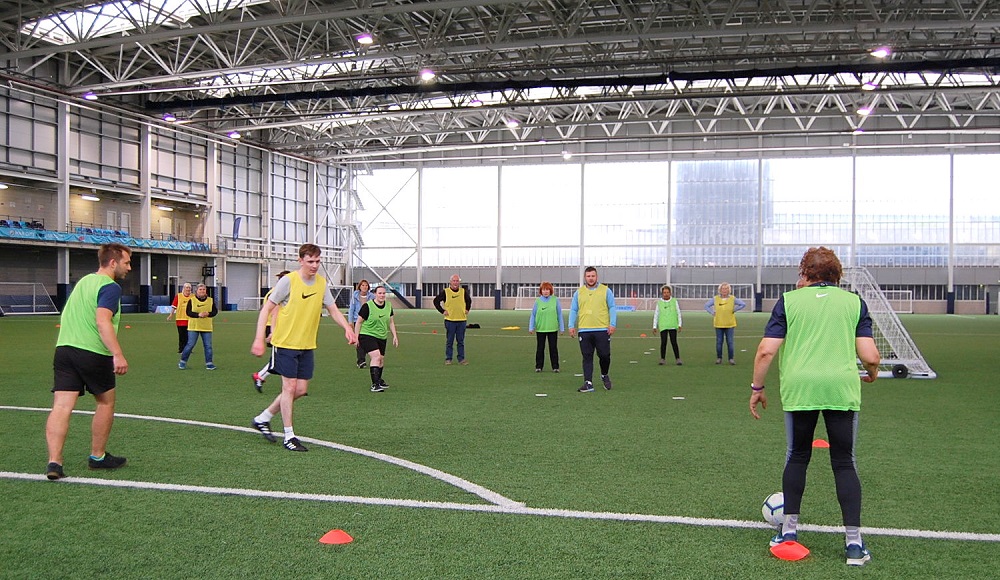 The third event on my list was an Italian meal at Dom’s Tavola Calda on Deansgate. I decided to make a day of it and took an early tram into town. Had a rare mooch around the Arndale before meandering through M&S to the restaurant.
The third event on my list was an Italian meal at Dom’s Tavola Calda on Deansgate. I decided to make a day of it and took an early tram into town. Had a rare mooch around the Arndale before meandering through M&S to the restaurant.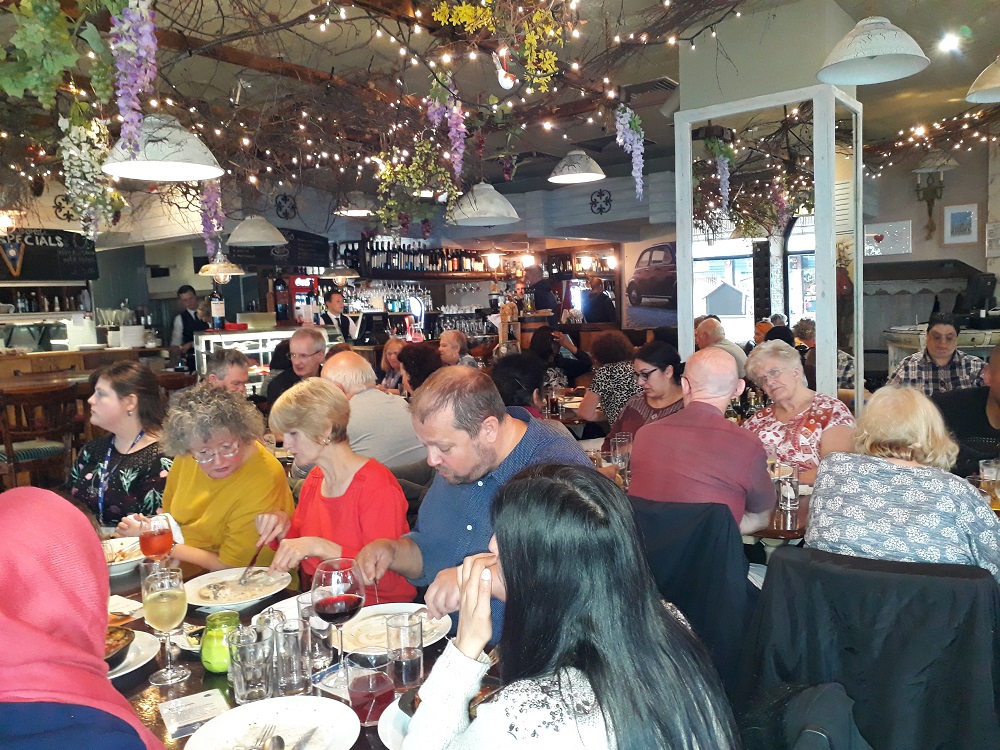 Tucking in into Italian??
Tucking in into Italian??
I soon spotted someone I knew, plonked myself down and had great time. Fabulous atmosphere, like being on a works do. Finished with a tiramisu as light as air, washed down with a glass of vino blanco – bellissimo!
Finally, and much needed after all that food, the week rounded up with a brisk walk, courtesy of Manchester and Salford Ramblers, around Salford Quays and Media City. It was easy to get to on the tram and the weather was perfect.
The walk took us past the Imperial War Museum and Ordsall Hall, both of which are free. I had a meander through the Blue Peter Garden and a nosy around the Lowry Shopping Centre. Thoroughly impressed and I’ll definitely go back.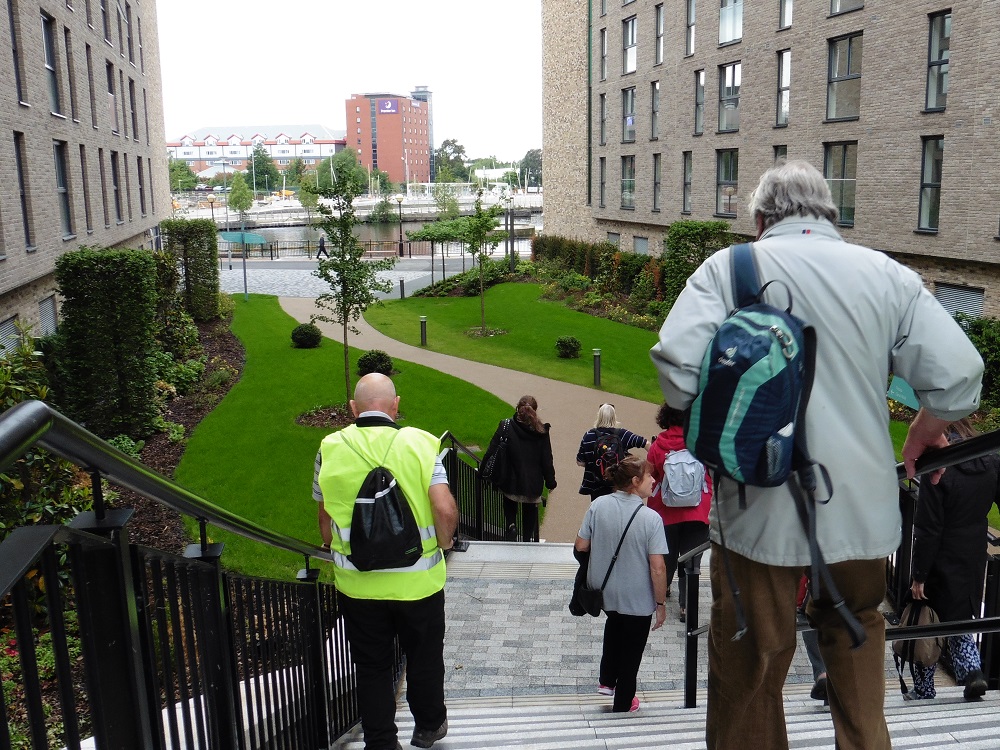 Somewhere near Salford Quays
Somewhere near Salford Quays
There were lots of other things going on that week that I didn’t get to but a massive thanks to the organisations involved for their time, funding, facilities and hard work. I’m truly grateful for the opportunity to get out, have some fun and meet new people. My fellow walkers outside Ordsall Hall
My fellow walkers outside Ordsall Hall
Carers Week isn’t a one-off. There are regular meetings, trips out, free training sessions, coffee mornings and activities going on all across Manchester all through the year and you can easily access them as well as get advice, information and support.
Not sure if you’re a carer? This might help…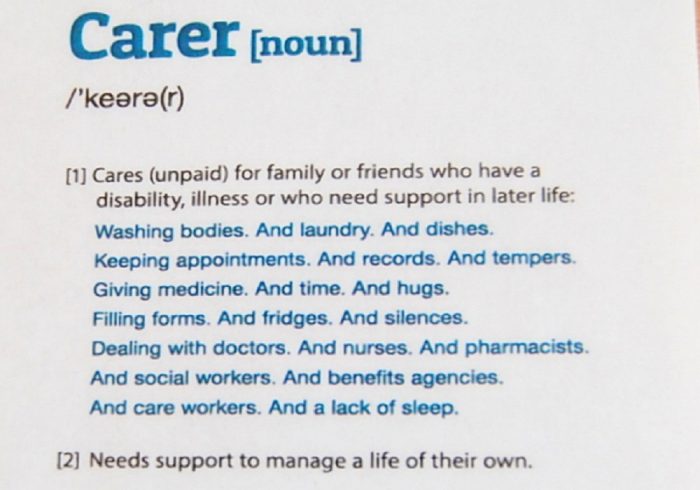 If you are local to Harpurhey/Moston, workshops run by Manchester Carers Network have been held at Broadhurst Community Centre. Manchester Carers Forum hold monthly meetings at The Avenue Library and Learning Centre in Blackley, Age Exchange run an activity club at EachStep on Charlestown Road and there are rumours that Manchester Carers Centre will be running sessions at Harpurhey Wellbeing Centre on Church Lane starting next month.
If you are local to Harpurhey/Moston, workshops run by Manchester Carers Network have been held at Broadhurst Community Centre. Manchester Carers Forum hold monthly meetings at The Avenue Library and Learning Centre in Blackley, Age Exchange run an activity club at EachStep on Charlestown Road and there are rumours that Manchester Carers Centre will be running sessions at Harpurhey Wellbeing Centre on Church Lane starting next month.
Further information on other localities and details of future events can be found by clicking on the links below:
Manchester Carers Network, Manchester Carers Forum, Manchester and Salford Ramblers, Manchester City Walking Football, Broadhurst Community Centre (FB), Imperial War Museum North, Ordsall Hall, Age Exchange, Bridgewater Hall.
 The old township districts were rightly proud of their Sunday schools. From 1784, they had been offering free education to poor children and adults. And until child labour was abolished altogether, Sunday school superintendents and teachers were in the forefront of the battle to achieve safer and healthier working conditions for their scholars.
The old township districts were rightly proud of their Sunday schools. From 1784, they had been offering free education to poor children and adults. And until child labour was abolished altogether, Sunday school superintendents and teachers were in the forefront of the battle to achieve safer and healthier working conditions for their scholars.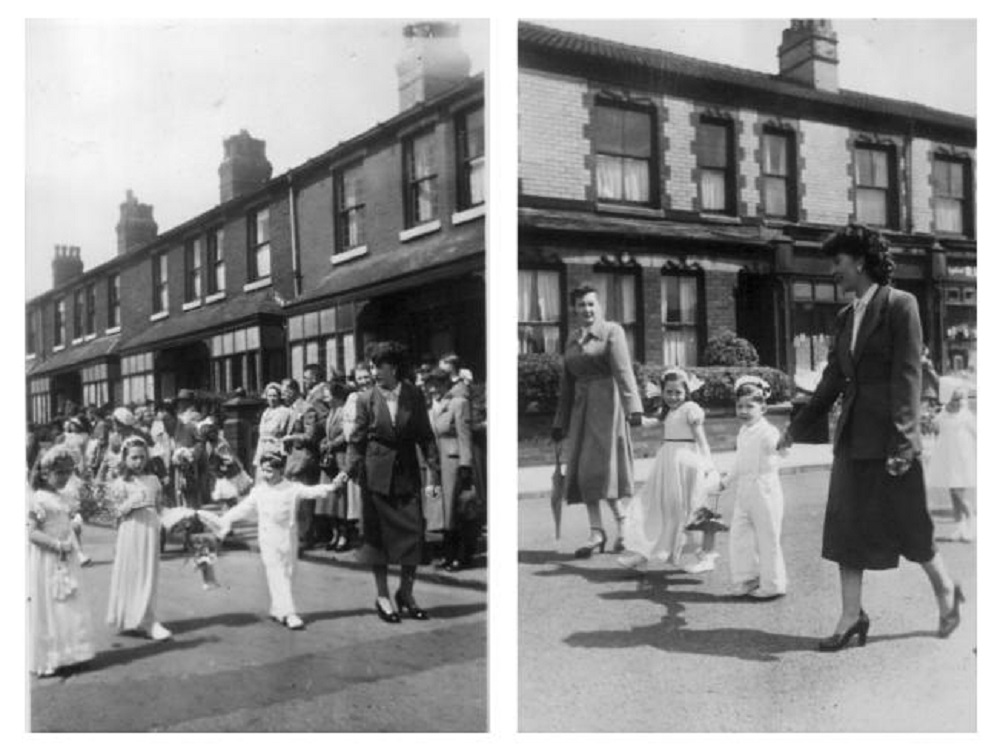 The dresses girls walked in were showy, but totally impractical for the often damp and chilly Manchester weather. But even when they became available, it was an indulgent parent who allowed a plastic mac to cover up those swanky new clothes for anything less than a torrential down-pour.
The dresses girls walked in were showy, but totally impractical for the often damp and chilly Manchester weather. But even when they became available, it was an indulgent parent who allowed a plastic mac to cover up those swanky new clothes for anything less than a torrential down-pour. Boys were grouped into uniformed, grey-shorted or even sailor-suited lines. They mostly walked in single file, sometimes holding on to a fancy cord; woe betide any scholar who didn’t maintain the required distance between themselves and the next child.
Boys were grouped into uniformed, grey-shorted or even sailor-suited lines. They mostly walked in single file, sometimes holding on to a fancy cord; woe betide any scholar who didn’t maintain the required distance between themselves and the next child.